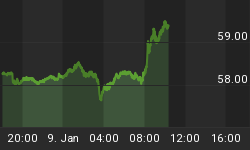18 October 2007
We are witnessing a generational bull-market in natural resources. The boom is due to the ongoing urbanisation and industrialisation of vastly populated developing nations in Asia and Latin America. And central-bank sponsored monetary inflation is adding fuel to the already raging fire. It is interesting to note that despite all the "end of the world" forecasts by numerous analysts, my preferred assets continue to power ahead.
Today, some highly intelligent economists are shouting "bubble' and claiming that this uptrend built on the easy monetary policy cannot last forever. However, I am of the view that we are not in a "bubble" yet and this bull-run is due to the very real fundamental forces of supply and demand. Wherever you care to look in the commodities' universe, you can see that supplies are extremely tight and failing to keep up with the rising demand coming out of emerging Asia.
In the business of investing, it usually pays to observe the market and one should avoid becoming fixated with pre-determined conclusions. After spending over a decade in the investment-management business, I have learnt never to fight the trend. And the trend for commodities and the emerging-markets is up. For sure, as night follows day, this bull will mature and then die. However, between now and judgement day, fortunes will be made by patient investors.
Now, there is no doubt that the over-leveraged US economy is slowing down, however new consumers in the emerging-markets are underpinning the synchronised global expansion. Recent IMF statistics reveal that global exports continue to soar, reaching a record US$13.5 trillion; representing a gain of 138% since 2001. On the other hand, over the past 12 months, US imports (including petroleum) came in at US$1.9 trillion representing just 14% of the world's total exports! So, you can see that America's influence on the global economy is gradually diminishing as other regions of the world become stronger.
Skeptics of the ongoing bull-market may want to take note of the fact that today only 20% of China's exports go to the US. In other words, 80% of China's exports are shipped to other parts of the world. Therefore, the much anticipated slowdown in US consumption may not throw the Chinese economy into a severe recession, thereby hurting the demand for commodities. Already, China has surpassed the US as the world's second largest exporter and its exports have grown by 27% over the past year. At current growth rates, China is projected to overtake Germany as the world's biggest exporter in 2008. A recent study by the China Academy of Social Sciences predicts that the Chinese middle class would more than double in size to 520 million by 2020. In case you are wondering, that gigantic number is bigger than the combined populations of the US, UK, Germany and France! Another report forecasts that China would surpass the US as the world's second largest consumer of luxury goods within 10 years and may become the world's largest luxury market by 2025.
Along with China, the commodities boom is being sustained by India. Together, they make up 40% of the world's population and despite low per-capita consumption levels they already consume more than 50% of the world's coal, iron-ore, steel and other key natural resources.
It is interesting to note that since the commencement of this uptrend in natural resources, demand growth has emerged from Asia and Latin America. On the contrary, demand growth from the industrialised nations has been sluggish. Now, for the sake of discussion, let us assume that the US economy slows down considerably over the coming quarters and does not grow at all. In other words, its GDP growth becomes zero. If that were to occur, zero growth would imply that instead of growing, US consumption would remain at last year's level. Would that be a disaster for commodities? Hardly, given the fact that Asia and Latin America are still growing at a healthy pace. Now, let us assume that China's economy slows down as well and instead of recording above 10% growth, its GDP expands at 5% over the coming 12 months. All other things being equal, that would imply that in the following year, China would still need 5% additional commodities compared to the past year - a bullish omen.
The ongoing bull-market in the world of tangibles is also having a positive impact on precious metals. As per my expectation, after the Fed cut its interest-rate, gold has broken out to a new high while the US Dollar has declined significantly. I am of the opinion that we are on the verge of a massive rally in precious metals and this advance is likely to continue until spring next year. So far in the ongoing boom, gold has underperformed relative to the industrial commodities. However, this is due to the fact that up until now the public's inflation expectations have been managed well by the manipulated figures released by the central banks. Somewhere ahead, the masses will wake up and realise that inflation is significantly higher than the official estimates and that is when gold and silver will rise in a parabolic manner.
In summary, even if I tried, I could not possibly imagine a more bullish environment for all types of commodities (energy, metals, food and water). The classic ingredients of rising demand, tight supplies and monetary inflation have all come together at once. How much you benefit from the secular trend will depend on your patience and perseverance as this bull rages ahead albeit erratically.















